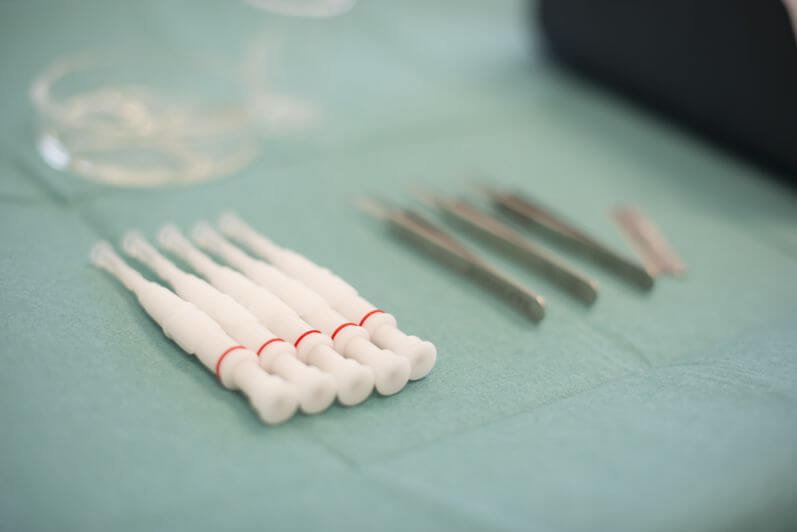About the FUE
Originally conceived by Australian surgeon Ray Woods, the concept of
harvesting donor hair in follicular units wasn’t made public until Rassman and Bernstein
published the FUE method in 2002. Titled ‘Follicular Unit Extraction: Minimally Invasive
Surgery for Hair Transplantation’ their work defined and detailed FUE and also highlighted how best to determine suitable
patient donor areas by applying the FOX test.
Such was the impact of their publication and so successful were the results of FUE treatment that it quickly became the
leading hair restoration technique.
How does FUE work?

The FUE (Follicular Unit Extraction) method is a process of
harvesting naturally grouping follicular units which are then
implanted.
A small circular section on the scalp around each follicular unit is
separated from the skin tissue. Using surgical tweezers it’s possible to remove each
unit leaving just a tiny circular mark on the scalp.
Follicular units (or grafts) are harvested until the surgeon has enough to
provide the desired hair covering.
Depending on the number of grafts required the procedure can last from a
few hours to two or three days. Usually though it’s completed in a single day. The
tiny (1mm) donor area holes (usually on the sides and the back of the head) will
heal within 7-10 days and will be completely covered by the
hair.
Note the difference between FUE (Follicular Unit Extraction) and FUT
(Follicular Unit Transplant). While FUE harvests donor hair follicle by follicle,
FUT removes a series of single long, wide strips of scalp. Each strip is sliced
microscopically then implanted.
In both methods the recipient area is prepared using a sharp instrument to
define the exact point of implant for each graft. Each follicular units is
then sown and grow to be a new and healthy hair.
FUE and FUT differ in that because FUT uses larger, square-shaped grafts
the end result is less natural look, more of a dotty, doll’s hair style with spaces
in between. FUE invariably gives a much more natural, fuller look.
An FUE hair transplant - is it right for you?

Do you like to wear your hair short? Because FUE leaves no
large and visible linear scar it’s the ideal option.
It’s the ideal option too if you want fast results.
You’ll be out and about in double quick time.
Maybe you’ve had a less that satisfactory FUT experience. Use FUE to put
right what previous strip-harvesting (FUT) procedures may have got wrong.
Normally we’d use hair from the back or the side of your head to harvest
follicles. We don’t have to though. If there aren’t enough we can use other parts of
the body, for example your beard area to deliver a sufficient number of grafts.
There’s no escaping the fact that though FUE is less
invasive, both FUE and FUT are surgical procedures. That said the
results of FUE are invariably superior.
How many hairs will you need transplanted?

It needs careful calculation.
First we’ll measure the surface of the recipient area including the hair
volume per square centimeter.
Typically hair on the top of your head has a volume of 130-170 hairs/cm2.
Donor area volumes (hair at the sides and back of your head) are between 150-190
hairs/cm2.
Transplanted hair is usually 80-120 hairs/cm2 though where donor hair is
high quality and thick this can be more.
For adequate coverage of a completely bald area we need a minimum volume
of 100 hairs/cm2. Of course the bigger the density, the better the results.
The size of the recipient area needs careful calculation. For example,
lowering the hairline on the sides above the forehead by 1 cm, requires about 6 cm2
on each side. For a density of 100 hairs/cm2 that’s 12 cm2 in total multiplied 100
meaning that we’ll need to transplant 1,200 hairs.
Post procedure

Though FUE hair transplant needs a far greater donor area than FUT strip harvesting, the healing of tiny holes is far quicker – only 7 to 10 days until visible signs of your FUE have vanished.
Are You Ready to Change your hair?
Do you want to stop your hair loss and regain your natural hair style?
Apply now for a Personilazed treatment plan.